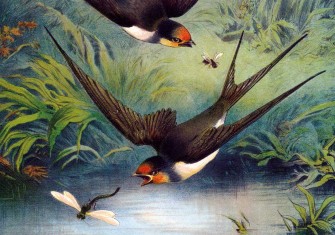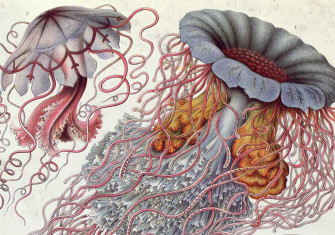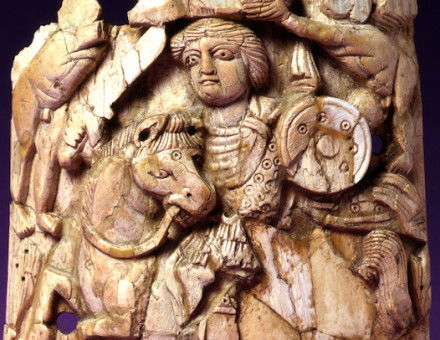Catullus and Lesbia’s Sparrow
Roman poet Catullus transformed an unremarkable bird – the sparrow – into a contested symbol of eroticism.
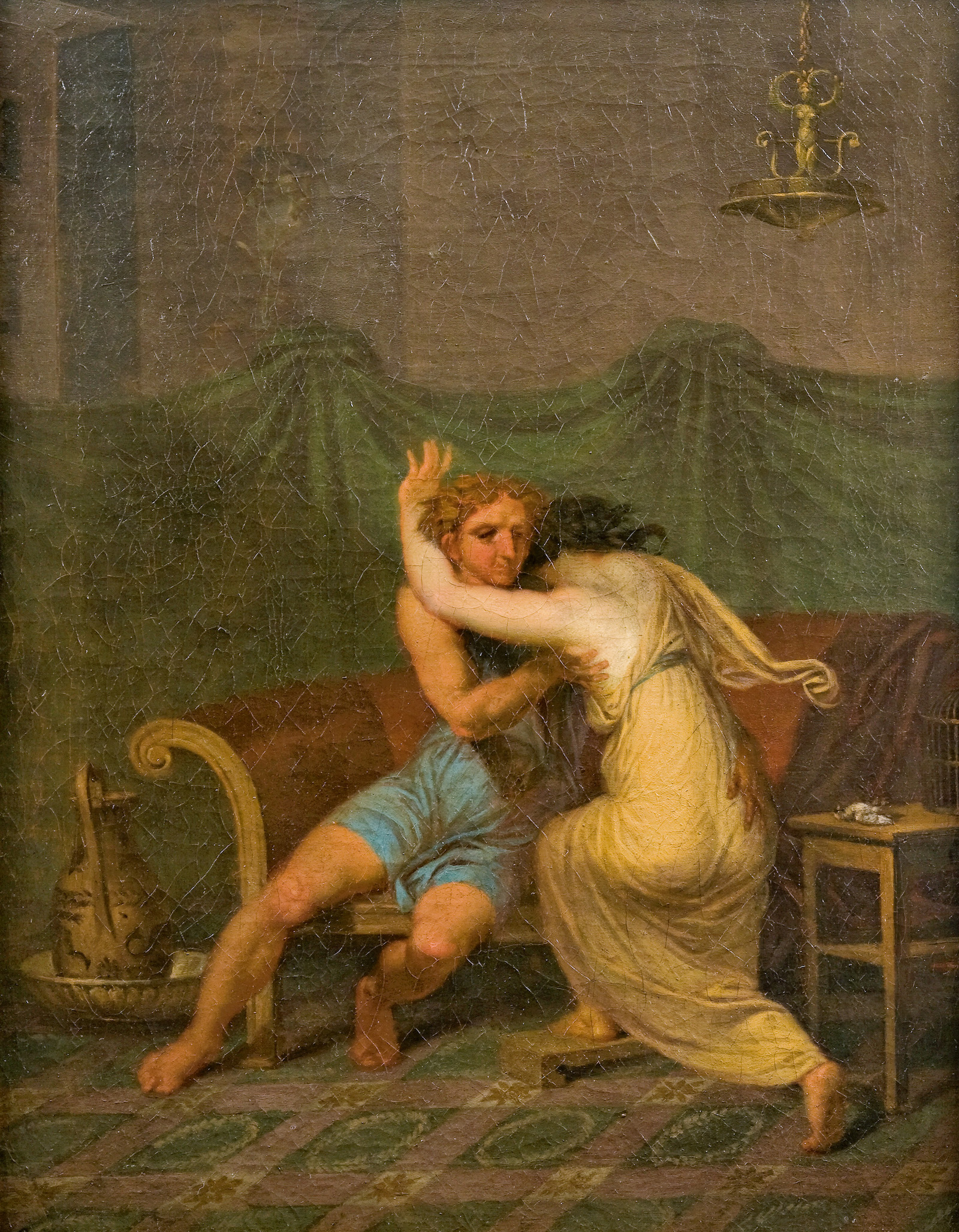
No sparrow has provoked as much affection or controversy as that commemorated by the Roman poet Catullus (c.84-54 BC). The pet of an unnamed puella – presumably his beloved ‘Lesbia’ – the bird in question appears in two short verses, each written in charming hendecasyllables. In the first, Catullus addresses the sparrow (passer) itself, as a means of discreetly declaring his affection for Lesbia. He recounts how tenderly she would hold it to her breast (in sinu) whenever she felt the need to play a silly game, or to find relief from her sorrows, and notes that she received a sharp nip when she gave it a finger to peck. His only wish is that he could play with the sparrow like she does for then, he sighs, it might lighten the heavy cares weighing on his heart – most likely because of Lesbia’s indifference. The second poem is more sombre in tone. A lament on the sparrow’s death, it begins with Catullus calling on all the ‘Venuses and Cupids’ – as well as on a number of ‘the more graceful men’ – to mourn the bird’s passing. Echoing the previous verse, he recalls how it used to hop about contentedly in her lap (a gremio) and chirped only for her. Then, moved by the memory, he curses the ‘evil shadows of Death’ for having taken from him ‘such a beautiful sparrow’ and for making the ‘eyes of [his] lady red’ and ‘swollen with weeping’.
So vivid is Catullus’ portrait of Lesbia’s sparrow that his early readers could have been forgiven for thinking it was taken from life and that its realism was intended to heighten the emotional intensity of his declaration. But the poems left room for doubt. Although sparrows were sometimes kept as pets in Roman Italy, his contemporaries would have known that they are not the most obvious of companions. With their dun-coloured feathers, dark bills and unremarkable song, they are hardly endearing; and, while they seem to enjoy being close to humans, they are almost impossible to train. It may therefore have seemed unlikely that a well-bred Roman woman like Lesbia would have chosen a sparrow as a pet, let alone loved it ‘more than her own eyes’. And if Catullus’ passer was not modelled after a real bird, it was only reasonable to wonder if it might not have been intended as a metaphor for something else, perhaps something more vulgar.
Partly because of their familiarity, sparrows had long been linked with lewdness. As Richard Hooper has recently pointed out, ‘in Egyptian hieroglyphics the determinative for “little, evil, bad” was … śerau, the sparrow’. In Sappho’s poems, sparrows are shown pulling Aphrodite’s chariot; in Apuleius’ Metamorphoses, passeres follow in the goddess’ train; and in Pliny the Elder’s Historia naturalis, they are described as being as salacious as doves (columbes). The grammarian Festus developed this further. In his epitome of Verrius Flaccus’ De verborum significatione, he linked them with the ‘obscene part of a man’. For Martial, such associations were the key to understanding Catullus’ poems. In a characteristically racy (if ambiguous) epigram, he insinuated that, when Catullus had spoken about Lesbia’s sparrow, he had actually been talking about his own membrum virile. When coupled with Catullus’ assertion elsewhere that poetry should be titillating, even if the poet was chaste, this suggested that the first poem should be read as a comment on the inferiority of masturbation to sex and the second as a lament on impotence.
Despite (or perhaps because of) such teasing ambiguities, Catullus’ poetry was hugely popular during his lifetime. His verses were widely admired, even by Ovid and Virgil; and his sparrow poems inspired a whole subgenre of animal-themed verse. But in the decades after his death, he was eclipsed by poets like Martial, whose poems, often written in imitation of his own, were easier and more entertaining to read. By the reign of Hadrian, he had already begun to drift into obscurity. How and in what state his works survived in the centuries that followed is open to debate. At least some of his verses seem to have endured for a time. Jerome discussed him at length in his supplement to Eusebius’ Chronica and one of Catullus’ poems was included in a ninth-century florilegium (the Codex Thuaneus). But otherwise Catullus – and Lesbia’s sparrow – seem largely to have flown from view.
When Catullus’ verse resurfaced in a single, corrupt manuscript, possibly from France, in the late 13th or early 14th century, the excitement it aroused was matched only by the questions it raised. For Italian humanists the ambiguity of the sparrow poems was particularly challenging. Reading the two verses at a distance of more than a thousand years, often through the lens of their own vernacular culture, they struggled to decide what Lesbia’s passer ‘meant’, let alone how best to imitate Catullus’ depiction.
For the historian, however, these difficulties are a rare gift. Precisely because humanists had to make such an effort to ‘decipher’ Lesbia’s sparrow, the way in which they viewed that little bird tells us a great deal not just about the reception of Catullus’ works, but also about the shifting mores of humanistic culture and the role of vernacular literature in shaping attitudes towards classical texts.
New admirers
Within a few decades of his rediscovery, Catullus attracted an enthusiastic following. In Padua and his native Verona, Lovato de’ Lovati, Albertino Mussato and Guglielmo da Pastrengo all counted themselves among his admirers. Yet perhaps his most avid fan was Petrarch. Although we cannot be sure about exactly how much of Catullus’ works he had read, there is no doubt about the depth of his feeling. In the Triumphus cupidinis, Petrarch hailed Catullus as one of the three ‘great’ love poets, alongside Tibullus and Propertius; and, while he quoted Catullus only sparingly, he was not averse to citing the Roman poet by name in his letters and verses. Petrarch does not, however, seem to have shown much interest in the sparrow poems. Apart from a brief allusion in a letter to Neri Morando, Lesbia’s passer left virtually no trace in his writings. Petrarch was more attracted to Catullus’ overtly mythological works. Even then, he made little effort to emulate his poetic techniques and appears to have valued him more for the sidelight he could cast on Virgil than for his own merits.
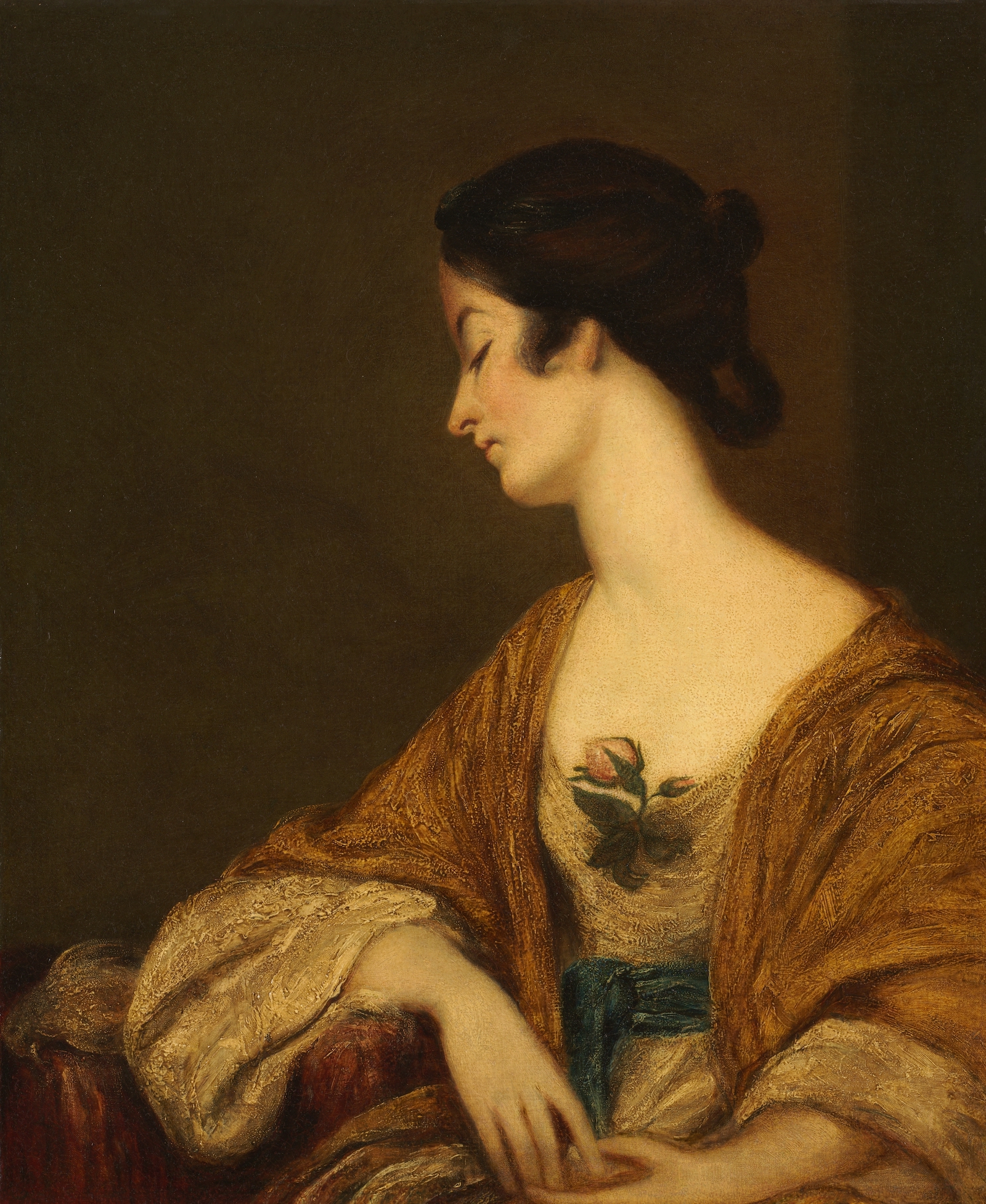
The most likely explanation for Petrarch’s indifference is that they were simply out of keeping with his understanding of both love and love poetry. Whereas Catullus conceived of love in sensual terms and saw poesia as an inherently erotic enterprise, Petrarch took almost precisely the opposite view. Grounded in a Christian Weltanschauung, Petrarch’s poetry was self-consciously chaste. His vernacular poetry – notably the Canzoniere – was devoted almost exclusively to unrequited longing, usually at a distance, the instability of temporal desires and the contrast between sacred and profane love. No matter how Catullus’ sparrow poems were interpreted, they were hence unsuitable for imitation, or even commentary. If they were ‘innocent’ (i.e., if the passer was just a bird), they were suggestive of much too intimate a setting between lover and beloved; but if they were ‘obscene’ (i.e., if the passer was a membrum virile), they were simply beyond the pale.
By the mid-15th century, however, the fate of Lesbia’s sparrow had begun to change. Since Petrarch’s death, interest in Catullus’ poetry had exploded. Scores of manuscript copies had been made of his poems, albeit in a corrupt form; Sicco Polenton had written a Vita of the poet, perhaps the first since antiquity and, in 1472, Vindelinus de Spira published the first printed edition of his works in a volume also containing Tibullus, Propertius and Statius’ Silvae. Although a proper critical edition would not appear until much later, a series of further printings appeared in quick succession over the following years.
As Catullus’ readership grew, his poetry found a particularly receptive audience in Naples. During the reign of Alfonso V (1396-1458), a more exuberant and permissive literary culture, far removed from the austere strictures of the previous century, began to emerge. Of the galaxy of humanists who flocked to the court, the guiding star was Giovanni Pontano. More than anyone else, he set Catullus’ works on a new footing.
Pontano wrote three collections of ‘Catulluan’ verse: Pruritus (1449), Parthenopeus sive Amores (1457) and Hendecasyllabi sive Baiae (1505). They were grounded in an entirely different conception both of Catullus and of love itself. As Julia Haig Gaisser has noted, Pontano ‘accepted the portrait of Catullus he found in Martial, read Catullus through Martial’s imitations (but with Renaissance eyes), and wrote Latin verse using Catullus’ themes and metres’. Unlike Petrarch, he also accepted that love could be sensual and saw no reason why love poetry should not include the erotic.
This opened the door to the ‘obscener’ interpretation of the sparrow. Following Martial, Pontano read passer as a sexual metaphor and was sufficiently taken with the idea to attempt his own version, albeit featuring another of Aphrodite’s birds. In Parthenopeus, he cheekily insisted that his ‘dove’ would give pleasure only to his beloved girl – and not to ‘male catamites’.
A few years later, the Tuscan humanist Angelo Poliziano developed this more fully. Reading the text through the same lens, he clarified that Catullus’ sparrow ‘conceals a more obscene reading’; and that, in offering to give a boy the passerem Catulli, Martial was using the same meaning. ‘What that is’, he added, ‘I leave to each reader to conjecture.’
Filthy versions
As Gaisser has pointed out, Pontano and Poliziano ‘set the terms’ for later ‘Renaissance imitators of Catullus’ and enshrined Lesbia’s sparrow as a dirty joke. They inspired a host of other poets, including Jacopo Sannazzaro and Janus Secundus, to attempt their own, equally filthy versions. But not everyone agreed with them. In England – where Catullus seems to have been read seriously only from the early 15th century onwards – those who imitated the sparrow poems often favoured a ‘chaste’ interpretation. Although this was, in some cases, simply a reaction against the vulgarity of continental ‘sparrow’ poems, it was more than just a rejection of Pontano and Martial. Rather, it seems to have been the result of English readers viewing Catullus through a ‘Petrarchan’ lens.
That Petrarch was regarded as the love poet par excellence at the Tudor court is well known. Writers like Thomas Wyatt and Philip Sidney sympathised greatly with his conception of love poetry as the virtuous celebration of an unrequited love. But whereas this poetic vision may have prevented Petrarch from paying much attention to the sparrow poems, Linda Grant has argued that the authority attached both to his vernacular poetry – and to his wider humanistic ‘project’ – paradoxically gave English poets a reason not only to look for a ‘chaste’ reading of Catullus’ sparrow verses, but also to integrate their ‘innocent’ Catullan birds into their own works of poetry and prose. Although John Leland, for example, decried Catullus as a ‘soft, degenerate little bugger of a poet’, he had no problem in believing that his ‘dove’ (sic) had been a bird, sincerely mourned; and while John Skelton’s Boke of Phyllyp Sparrow has been much debated, Gaisser has demonstrated that it is bereft of erotic overtones.
The debate did not end there. Since the 16th century poets have argued endlessly over the meaning of Catullus’ passer; and no end of verses have been produced based on the rival interpretations, or consciously playing on the ambiguity. In the early 18th century, for example, Noël Étienne Sanadon published In mortem passeris, using the sexual connotations of the bird to effect a triumph of innocence over lust; Ezra Pound later teased his reader with the uncertainty of how to read the bird in his Three Cantos. Even today, classical scholars continue to argue.
It is doubtful whether any resolution will be achieved; but, if the Renaissance fortunes of Lesbia’s sparrow illustrate anything, it is that a poem is never stable. How it is read, re-read, copied and imitated, reflects the reader’s relationship not just with the author’s culture, but with their own and even with the nature of poetry itself. This is, as we have seen, a treasure trove for historians, but it is also a gift to us. Each time we read Catullus’ sparrow poems – or any other verses – we are forced to look a little harder at ourselves.
Alexander Lee is a fellow in the Centre for the Study of the Renaissance at the University of Warwick. His latest book, Machiavelli: His Life and Times, is now available in paperback.



